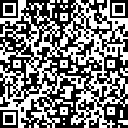
How soap destroys viruses
- 09 Jan 2021
- Admin
The pepper and soap experiment: How soap destroys viruses
Amidst the coronavirus chaos, everyone seems to be grabbing the hand sanitizer and washing their hands more often than just after using the bathroom.
Mind-blowing. Want to try it for yourself?

Take some pepper and sprinkle it in a dish with plain water. Get a second dish and fill it with soap and water. Now, dip your finger into the dish with pepper water. Look at your finger. It may have a few specks of pepper on it. Dip your finger in the dish with soap water, making sure it’s fully submerged. Now dip your soap-covered finger back into the dish of pepper water. You should see the pepper immediately move away from your finger.
This demonstration mimics how germs are removed from hands with soap. Soap consists of molecules with a dual nature – one end of the molecule is attracted to water and repelled by fats and proteins, and the other end is attracted to fats and proteins and repelled by water.
A virus, such as coronaviruses and the flu, is encoded by RNA (a coat of fat and protein) so when the side of the soap molecule that is attracted to fat and protein inserts itself into the virus’s shell, the chemical bonds holding the virus together are broken apart. The broken virus is not soluble in water, therefore it disintegrates and is washed down the drain. Even if the virus is not destroyed on the spot, the soap will remove bacteria and viruses off the surface of the skin.
The key, however, is to make sure you spend at least 20 seconds washing your hands.
And, when it comes to hand sanitizer, use it when soap and water are not available. Make sure to use an alcohol-based hand sanitizer that contains at least 60 percent alcohol. Apply enough product to saturate the hands and rub hands together for about 20 seconds until the skin is dry. Never rinse or wipe off hand sanitizer before it is dry because it may not work against germs, and try to wash your hands as soon as soap and water is available.
We Love to hear from You
Feel free and share with us. We will get you










